Shropshire Housing Group
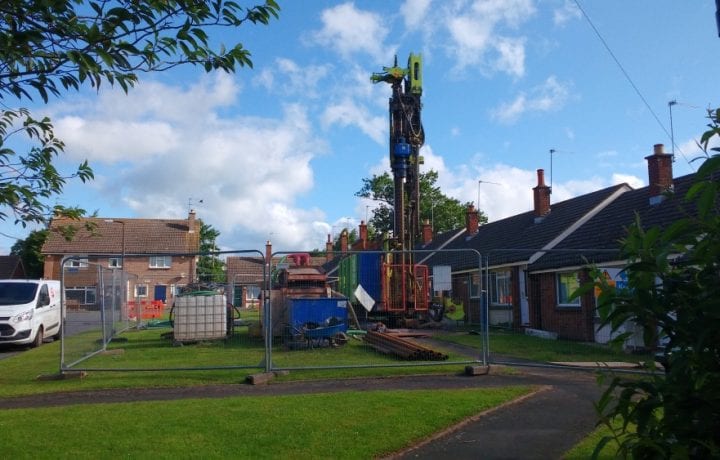
Ground Source Review: South Shropshire Housing Association
Kensa Heat Pumps’ contracting division, Kensa Contracting Ltd, were appointed by South Shropshire Housing Association as the principal contractor for a £500k heating upgrade scheme comprising ground source heating systems at two of Shropshire’s sites; St Mary’s Place and College Close in Cleobury Mortimer,Shropshire.
The scheme comprises twenty two 1 & 2 bedroom bungalows, one flat, a communal room with general needs, and eight 3 bedroom houses on the adjoining College Close estate. Both streams of the Renewable Heat Incentive (RHI – this scheme has closed) were accessed in this scheme, along with ECO funding.
- Highly Commended: Retrofit Project of The Year (H&V News Awards 2018)

Ground Source Review: South Shropshire Housing Association
Reason for the works
St Mary’s Place had electric storage heating and immersion hot water systems installed in 1997. These systems have an expected 20 year life and were therefore scheduled for replacement. Furthermore, households at St Mary’s Place had expressed dissatisfaction with their existing heating system on Shropshire’s Quality of Home survey.
College Close had a mix of solid fuel and electric storage heating.
Bernard Quinn, Investment Manager for South Shropshire Housing Association explains the main advantages and outcomes expected from the project:
- Helping meet our Decent Homes objectives;
- Helping meet our Affordable Warmth objectives;
- Helping meet our energy efficiency/carbon reduction objectives;
- Helping meet our customer satisfaction/quality of home objectives;
- Experience at similar projects elsewhere in the Group has shown a significant improvement in letability of rural properties with renewable heating systems over traditional solid fuel back boiler heating and electric storage heating.
Bernard continues:
We know that our tenants are finding it increasingly difficult to find the money to keep their homes warm. The residents in this area of Cleobury had electric storage heaters and solid fuel back boilers; as part of our review into updating their heating and hot water we found that ground source heating was a far better alternative, and residents agreed.
Our Asset Management Strategy includes a vision for the housing stock to be in good repair. This means planning to replace components such as central heating systems at the end of their useful life. The installation of ground source heat pump central heating will help deliver this vision. In addition we have a target to reduce our carbon footprint and tackle fuel poverty in our off gas properties. The proposal goes some way to help meet these ambitions.
Kensa’s role
Shropshire Housing were impressed with Kensa’s track record of completed projects. Kensa has achieved safe contractor accreditation which gave Shropshire Housing confidence that the project would be delivered on time and on budget.
Kensa designed the whole project and were responsible for the complete installation, commissioning and MCS accreditation. Further to this Kensa assisted in the tenant liaison process to ensure customer satisfaction throughout the entire programme. Kensa appointed experienced sub-contractors to carry out the ground works who have worked in partnership with Kensa for a number of years on other social housing projects. Warmer Energy Services were used to complete the internal installations.
Kensa worked with Shropshire to secure the ECO funding and the RHI (this scheme has closed) income and will continue to provide support as required for ongoing RHI (this scheme has closed) obligations.
Building condition prior to works
Shropshire had previously completed all viable fabric measures across the scheme with cavity and 300mm of loft insulation, replacement windows and doors, however the properties still featured ageing night storage heaters which were due for replacement.
Residents were struggling with high bills and ineffective heating as due to the age of the NSH not enough heat was being retained, leaving many reliant on fan convector heaters to top up their heating on expensive day rate electricity. In addition, the poor controls meant that properties were often too hot in the morning. To reduce cost some residents chose to turn off heaters in the property and only heat a single room; this not only provides an uncomfortable cold environment and poor health and well-being, but also leads to building fabric issues to such as build-up of mould and condensation.
Open vented hot water cylinders provided poor water pressure, and meant the use of electric showers was necessary in wet rooms.
The buildings also featured asbestos soffits, where the pipework was designed to enter the building.
Kensa’s solution
The proposal for St Mary’s Place is based on individual Kensa heat pumps using a shared ground loop for every three to five properties, meaning the scheme would qualify for the ECO and Non-Domestic RHI (this scheme has closed), paid over twenty years. This is partly based on the fact it is an open plan site, with insufficient curtilage per bungalow to facilitate individual boreholes.
College Close comprises three-bedroom semi-detached houses with adequate space within each curtilage for individual boreholes, making the installations eligible for receipt of the Domestic RHI (this scheme has closed), which is paid over seven years.
Due to the lack of available storage space within the properties, the heat pumps are installed externally within purpose-built enclosures provided locally by GSM.
The specification
Each property is fitted with a Kensa Shoebox ground source heat pump installed as part of a district system; each heat pump is connected to a shared ground loop. Typically, each district heat network consists of one borehole feeding two properties.
As part of the heating upgrade, all properties were also fitted with new skinny unvented hot water cylinders, specified to fit within the existing cylinder cupboard. Radiators were installed in each room fitted with TRV’s and new simple-to-use controls allow residents to have full control over when they require heating and hot water and what temperatures they require, which is improving tenants’ overall quality of life.
In addition, the contract also incorporated the following:
- Sure stops fitted to incoming mains supply;
- Magnaclean installed to maintain efficiency;
- Triton mixer showers fed by the new unvented hot water cylinder. Triton installed to reduce running cost, improve performance and reduce service and maintenance cost compared to electric showers;
- Soffits completely removed and replaced with uPVC as part of installation process;
- Bespoke locally-made external enclosures to house the ground source heat pumps, due to lack of space within the bungalows.
100% of residents invited on to the scheme took up the offer of the ground source heating upgrade.
Benefits of the installation
The ageing night storage heaters were leaving residents in financial difficulty, and cold; not enough heat was being retained, leaving many reliant on fan convector heaters to top up their heating on expensive day rate electricity.
Poor controls meant heat was not available when needed, but surplus when not required.
Fuel poverty became an increasing concern as residents commonly chose to save money by turning off the NSH and only heating one room, leading to poor health, well-being, and building condition.
Using district ground source heat pump (GSHP) systems, where a heat pump is installed at each property, allows tenants to benefit from the lowest possible running costs and receive independent billing through their electricity supplier as the individual heat pump is connected directly to the individual tenant’s supply.
This also means tenants are able to shop around for the cheapest possible deal rather than being forced to buy heat from the building owner as with traditional central plant district heating systems.
The ability to fully heat the home at a lower cost not only significantly improves the well-being of the resident but also reduces building maintenance issues relating to condensation and mould.
The use of micro-district GSHP’s makes the rollout in small rural communities viable where alternative forms of heat are not feasible or affordable.
The micro-district architecture negates the need for a plantroom, has no risk of heat losses, is scalable (each micro-district system can be for as few as two connected properties) and enables the tenants to be billed by their own preferred electricity supplier enabling the best deals.
There is no need for a central pumping station, as the individual circulating pumps in each unit will provide the necessary flow rate in all operating conditions, this also allows the ground side flow rate to modulate perfectly to the load without the need for any external complex controls.
This system was chosen as Shropshire felt if offered a number of benefits including:
- Lowest energy costs for residents, less than gas boiler solutions;
- Tackle fuel poverty;
- Improve the health of residents as they can heat their properties fully;
- Lowest carbon emissions;
- Lowest on-going maintenance costs of any heating system;
- No metering and billing for Shropshire to manage;
- A 20-year non-domestic Renewable Heat Incentive (RHI – this scheme has closed) income to be re-invested in further stock improvements;
- Upfront ECO funding to further offset project costs;
- Kensa would train Shropshire’s framework M&E Contractors to install the GSHP thus upskilling.
Tackling fuel poverty was central to the heating upgrade; every effort was made during the installation to reduce tenant energy bills and improve well-being, for example evidenced in the installation of Triton mixer showers fed by the new unvented hot water cylinder, and simple-to-use controls.
Environmental & financial savings
The installation of micro-district ground source heat pump systems at St Marys Close received ECO (Energy Companies Obligation) funding through the CERO (Carbon Emissions Reduction Obligation) stream. This funding stream has an approved OFGEM methodology for calculating the lifetime carbon savings. Using this methodology, the scheme will save 3362 tonnes of carbon emissions during its lifetime.
The installations provided an average SAP increase of 15 points, bringing properties up to an average 62D. Environmental impact ratings increased to an average 71C; an increase of 50 points from the original storage heater system.
Full data on the actual running cost savings will be collected in a post completion survey undertaken at the close of the scheme. However initial findings indicate that running costs will be in-line with the predicted 30-50% reduction compared to the original heating system. This translates to anticipated savings of £200, to as much as £450 per year for the larger properties.
Feedback
Bernard says:
Feedback has been very positive, as there is general dissatisfaction with electric storage and solid fuel heating systems and residents welcome the opportunity to have new controllable and affordable central heating systems in their homes.
We were an early adopter of air and ground source heating. It’s been a key part of our affordable warmth strategy for the last eight years’. So far it’s estimated that the Group has saved its tenants nearly a quarter of a million pounds in their heating bills. This project contributes to a total of more than 280 renewable heating installations at 42 locations across Shropshire, where fuel poverty is always high on the agenda.
 Cleobury resident Mrs Christina Groves says:
Cleobury resident Mrs Christina Groves says:
The new system is fantastic, it’s easy to operate, you just set it and leave it and it provides a constant heat and hot water when you need it.
 Mr Derek Fletcher says:
Mr Derek Fletcher says:
It’s a lovely constant temperature now and the bathroom is nice and warm. The workmen were very helpful and no trouble.
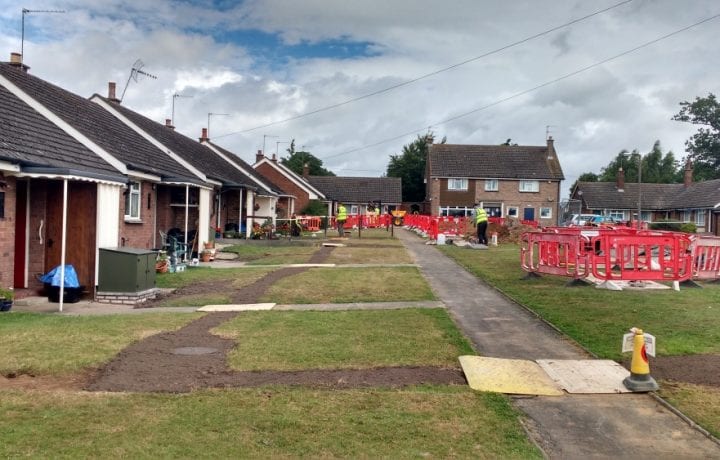
Ground Source Review: South Shropshire Housing Association - Trenching and headering
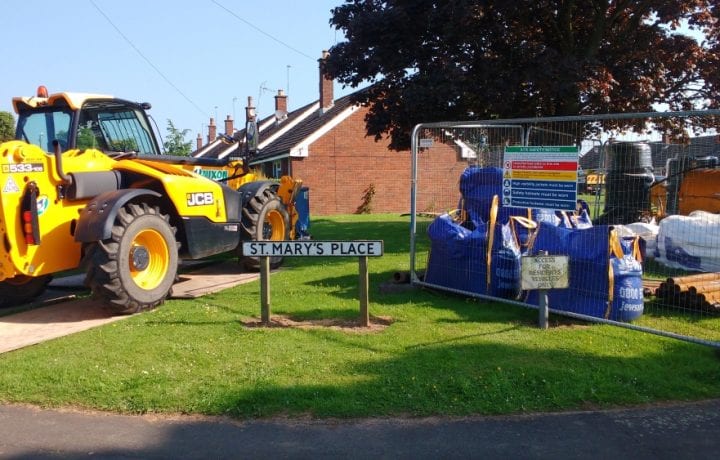
Ground Source Review: South Shropshire Housing Association - GSHP installation

Ground Source Review: South Shropshire Housing Association - The Team
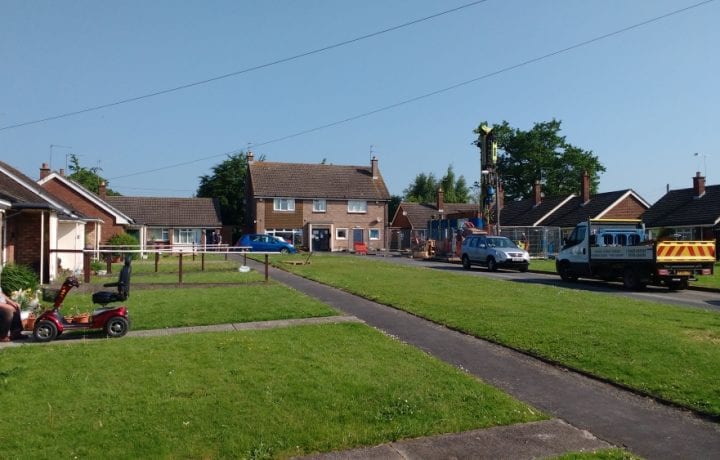
Ground Source Review South Shropshire Housing Association - St Mary's, residents watching
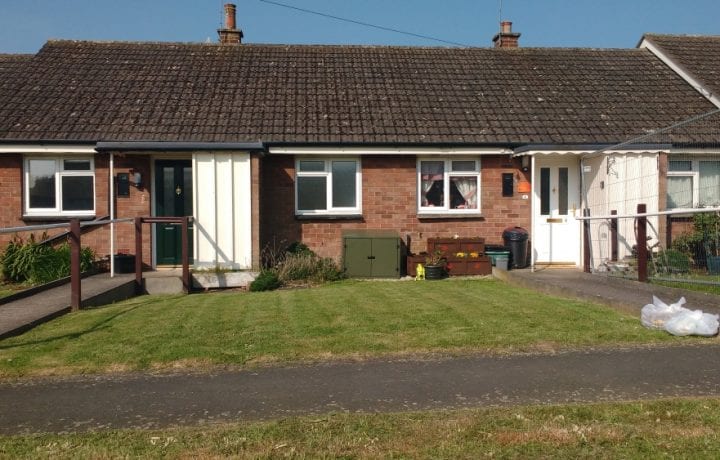
Ground Source Review: South Shropshire Housing Association - Enclosure Installed
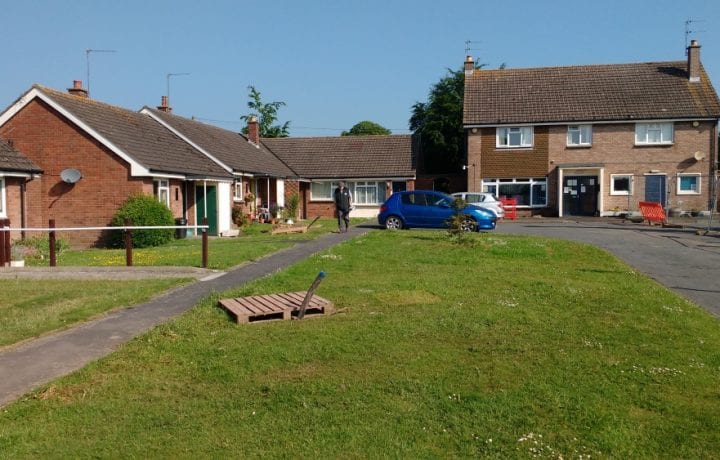
Ground Source Review: South Shropshire Housing Association - completed borehole
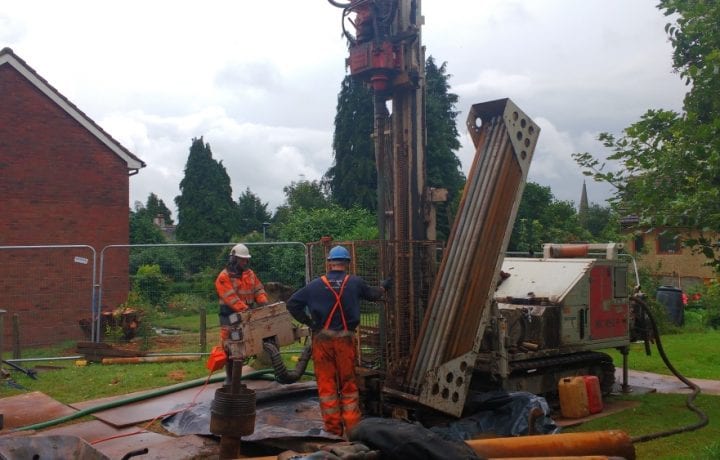
Ground Source Review South Shropshire Housing Association - drilling

Ground Source Review: South Shropshire Housing Association - Borehole drilling at St Mary's place

